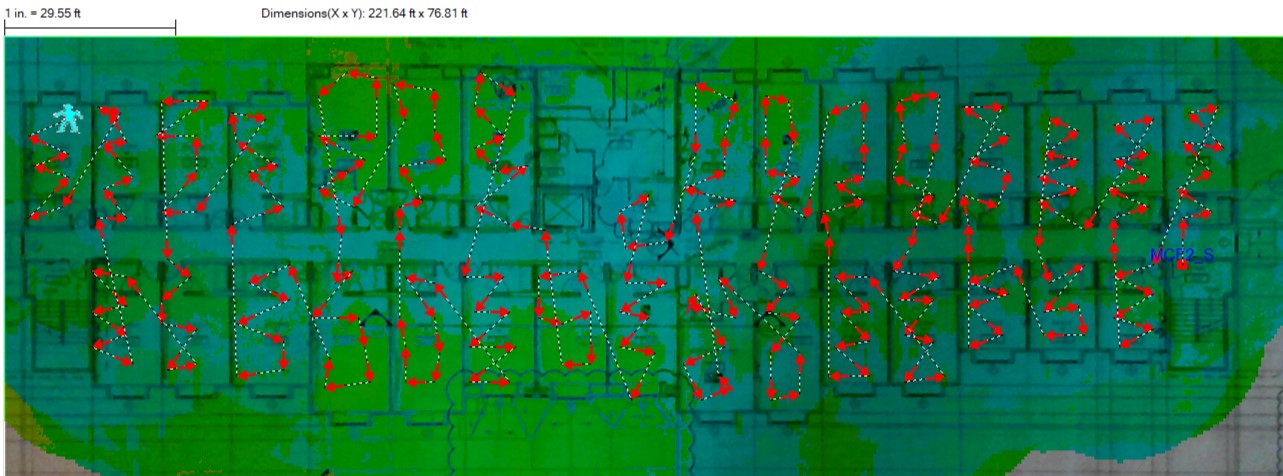Wi-Fi has become the backbone of modern connectivity, but the invisible forces that power our wireless world remain a mystery to many. Signal propagation, the journey of radio waves from your router to your device, is a complex dance influenced by numerous factors. Understanding how signals propagate can help you optimize your network for better performance and coverage.
What Is Signal Propagation?
Signal propagation refers to the way electromagnetic waves travel through space. In Wi-Fi networks, these waves are in the form of microwaves, which move from the router (or access point) to connected devices. However, the path these signals take is rarely straightforward. Along the way, they encounter obstacles, reflect off surfaces, and weaken over distance.
The quality and strength of your Wi-Fi signal depend on how well it can propagate from the router to your device without significant interference or loss of energy.
Key Factors Affecting Signal Propagation
- Distance: The farther a Wi-Fi signal travels, the weaker it becomes. This is known as path loss, where the energy of the signal dissipates over distance. For example, a device close to the router may achieve maximum speeds, while a device farther away may experience slower speeds due to signal degradation.
- Obstacles: Walls, furniture, and even people can obstruct Wi-Fi signals. Different materials affect signal propagation in different ways:
- Wood: Moderately attenuates signals.
- Glass: Typically allows signals to pass through but can reflect some energy.
- Concrete and Brick: Significantly block or weaken signals.
- Metal: Reflects signals, causing significant disruption.
- Frequency Band: Wi-Fi operates primarily in two frequency bands—2.4 GHz and 5 GHz. The 2.4 GHz band has better range and penetration through obstacles but is more susceptible to interference from other devices (e.g., microwaves, Bluetooth). The 5 GHz band offers higher speeds and less interference but has a shorter range and is more easily obstructed by walls.
- Interference: Wi-Fi signals share the airwaves with many other devices, from neighboring Wi-Fi networks to household electronics. This can lead to interference, which reduces signal quality and network performance. Choosing the right channel and minimizing interference from other devices can improve signal propagation.
- Signal Reflection and Multipath: Wi-Fi signals can bounce off surfaces like walls and furniture, leading to multiple paths (multipath) that the signal takes to reach the device. Sometimes, these reflected signals can interfere with the direct signal, causing distortions or even cancellations.
- Antenna Orientation and Gain: The design and placement of antennas play a crucial role in signal propagation. Directional antennas focus the signal in a specific direction, enhancing range and strength in that area. Omnidirectional antennas, on the other hand, radiate the signal equally in all directions, providing broader coverage.
Types of Signal Propagation
Wi-Fi signals primarily propagate through three types of mechanisms:
- Line-of-Sight (LOS): The most direct path between the router and the device, where the signal travels in a straight line without obstructions. LOS provides the best signal quality and speed.
- Non-Line-of-Sight (NLOS): The signal must navigate around or through obstacles, which weakens it. NLOS is common in home and office environments, where walls and furniture obstruct the direct path.
- Reflected and Scattered Propagation: When signals bounce off surfaces or scatter due to irregular objects, they reach the device after taking multiple paths. This can lead to signal distortions and variability in connection quality.
Takeaway Table: Factors Affecting Wi-Fi Signal Propagation
| Factor | Impact on Signal | Mitigation Strategies |
|---|---|---|
| Distance | Weakens signal over longer distances | Place devices closer to the router; use extenders |
| Obstacles (e.g., Walls) | Blocks or attenuates signal | Minimize obstructions; place the router in an open space |
| Frequency Band (2.4 GHz vs. 5 GHz) | 2.4 GHz: Better range but more interference; 5 GHz: Higher speed but shorter range | Use band steering; choose the appropriate band based on needs |
| Interference | Degrades signal quality | Change Wi-Fi channels; reduce interference from other devices |
| Reflection and Multipath | Causes signal distortions | Use beamforming; position antennas strategically |
| Antenna Orientation and Gain | Affects coverage and signal direction | Adjust antenna placement; consider using directional antennas |
Optimizing Signal Propagation in Your Wi-Fi Network
To get the best performance from your Wi-Fi network, consider the following tips:
- Router Placement: Position your router in a central, elevated location with minimal obstructions. Avoid placing it near metal objects or electronic devices that can cause interference.
- Use Wi-Fi Extenders or Mesh Systems: If you have a large area to cover or experience dead zones, Wi-Fi extenders or a mesh network can help distribute the signal more evenly across your space.
- Adjust Antenna Orientation: Experiment with different antenna positions to find the optimal coverage pattern for your environment.
- Upgrade to a Dual-Band or Tri-Band Router: If you’re using an older router that only supports the 2.4 GHz band, consider upgrading to a dual-band or tri-band router to take advantage of the less congested 5 GHz band.
- Minimize Interference: Identify and minimize sources of interference, such as other Wi-Fi networks, cordless phones, and microwaves. Use a Wi-Fi analyzer to find the best channels for your network.
Conclusion
Wi-Fi signal propagation is a complex process influenced by various factors, from the physical layout of your space to the type of materials in your walls. By understanding these factors and implementing the right strategies, you can optimize your Wi-Fi network for better coverage, speed, and reliability. Whether you’re setting up a home network or managing an office environment, mastering the science of signal propagation will help you get the most out of your wireless connections.

